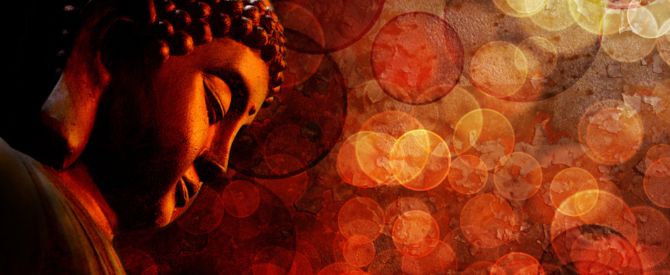You and I are essentially the inner witness experiencing our everyday lives. But we don’t usually live identified with this true nature of ours. In fact, we are not even aware of it.
Spiritual teacher and author Eckhart Tolle had a sudden and dramatic realization of being the inner witness. It was a time in his life when he was living with severe anxiety and suicidal depression.
In his book, The Power of Now, he writes that he had a life-changing experience at the age of twenty-nine. At that time, he was living with severe anxiety and suicidal depression.
One night, he sank into a deep depression. He felt an intense revulsion for his life and questioned his own existence. He came to the conclusion that he would be better off dead than alive. “I cannot live with myself any longer,” he thought over and over again.
Suddenly he became aware of how peculiar this thought was. He writes: “Am I one or two? If I cannot live with myself, there must be two of me: the ‘I’ and the ‘self’ that ‘I’ cannot live with.” “Maybe,” I thought, “only one of them is real.”
This stunning realisation abruptly halted his mind. He found himself being drawn into a vortex of energy and then sucked into a deep void.
He had no recollection of what happened after that.
Later, he realized that his intense inner turmoil created a powerful desire to completely withdraw from his miserable, fearful self. And when he did that, what remained was a thought-free “I am” consciousness, his real nature.
The illuminator of all our experiences
This “I am” consciousness is the great truth of our lives. It is who we really are. It is the silent inner witness that illumines all the experiences of our lives.
Vedanta, the spiritual science of life asserts that there are indeed two “I’s”. One is the apparent, ever-changing personality “I” and the other is the essential, changeless “I”.
The apparent personality is called the “ego”. The ego does not refer to an inflated sense of self but rather the notion of being an individual.
The changeless inner “I” is the witnessing consciousness that enables us to be aware of all our experiences at the level of the body and mind.
To understand the inner witness, let’s look more closely at what these experiences are according to Vedanta.
The three states of consciousness
We go through three states of consciousness every day. With each state, we gather a different set of experiences. They are the waking, dream and deep sleep states of consciousness.
Waking State: In the waking state, we gain our experiences mainly through our body and five senses—the eyes, ears, nose, tongue and skin. We process and respond to them with our mind.
Identified with your waking experiences, you are said to be the waker. As you read these words, you are the waker, going through the waking state of experience.
Dream State: In the dream state, our consciousness withdraws from our waking world into a dream world of experiences. We are not aware of our physical bodies and become totally identified with the mind and its dream projections.
Identified with your dream experiences, you are said to be the dreamer.
Deep Sleep State: In this state, our consciousness withdraws completely from our waking and dream worlds into a still, thought-free state.
Even though we don’t have any active experiences, we do have the experience of a blissful sleep. We don’t know it at the time we are in the deep sleep state but we look back when we wake up and say, “I had a good sleep.”
Identified with your deep sleep state of experience, you are said to be the deep sleeper.
The waker, dreamer and deep sleeper are three different personalities that arise from our identification with the three states of consciousness.
One unchanging witness
Even though we take on three different personalities, we remember all our experiences because the unchanging, ever-present “I” witnesses them.
To explain the presence of this unchanging “I”, think of the different roles that you take on daily. For example: parent, motorist, shopper, and TV viewer.
You remember them all because it’s the same one “you” that experiences them. That “you” remains unchanged no matter how many roles and experiences you have. That is the real you—the inner witnessing consciousness.
The nature of the inner witness
The inner witness has no shape or form. Its nature is pure consciousness or awareness.
It’s an inner presence that quietly watches the ego go through its waking, dream and deep sleep experiences.
Vedanta describes it as sat-chit-ananda or existence-consciousness-bliss.
This unchanging presence is untouched by all the conditions and experiences of the waking, dream and deep sleep states of consciousness.
It can be compared to space. Space is never sullied by the changes in the atmosphere and environment that lie inside it. For example, severe storms, earthquakes, tsunamis, volcanic eruptions, air, land and sound pollution, and conditions during war or peacetime do not, and cannot affect space. Space remains the same throughout.
Being mindful of the inner witness
The practice of mindfulness is becoming increasingly popular these days. All exercises in being mindful take our attention within. And when we do, we feel a sense of peace and calm. This is because the witnessing consciousness is the source of all happiness.
To be peaceful and happy, we need not look outside. We simply have to slow down and turn our attention inward to the silent witness. And when we do, the noisy world fades away into the stillness and peace within . .
Like this post? Sign up for the free fortnightly Spiritual Solutions Newsletter and receive the latest articles, news and updates in your email inbox!













